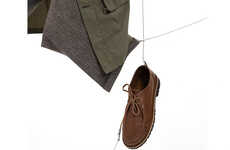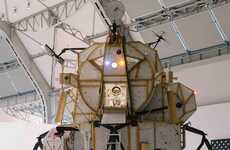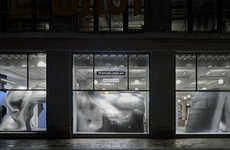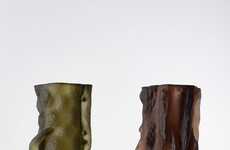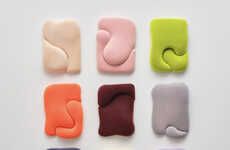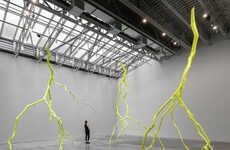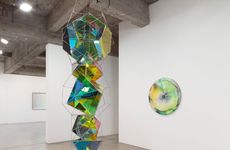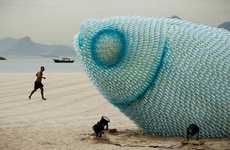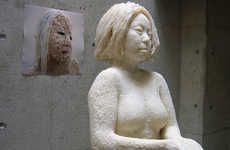
The Antony Gormley 'Bodies in Space' Series is Surreal
Sarah Nazim — July 22, 2012 — Art & Design
References: antonygormley & mymodernmet
This incredibly surreal Antony Gormley 'Bodies in Space' series explores the interaction between the human body and the surrounding space. The artist uses round molecular-shaped pieces to create these human forms. From a distance these installations are a bit ghostly and frightening.
Gormley is known to make massive sculptures that easily catch one's attention. What makes art so intriguing is that every artist draws from different inspiration and interests, which is often reflected in their works. Gormley seems to have a fascination with the human brain and body as most of his works involve bones, brains and the human form.
His works would make for great art displays for companies in the medical field, and could also pose as great learning tools for educators.
Gormley is known to make massive sculptures that easily catch one's attention. What makes art so intriguing is that every artist draws from different inspiration and interests, which is often reflected in their works. Gormley seems to have a fascination with the human brain and body as most of his works involve bones, brains and the human form.
His works would make for great art displays for companies in the medical field, and could also pose as great learning tools for educators.
Trend Themes
1. Surreal Installations - Exploring the interaction between art and space, using molecular-shaped pieces to create human forms, and making the installation appear ghostly and frightening from a distance.
2. Massive Sculptures - Creating massive sculptures that catch people's attention, and incorporating bones, brains, and the human form in the artworks.
3. Human Anatomy Fascination - Reflecting his interest and fascination with the human brain and body in most of his artworks.
Industry Implications
1. Medical Equipment - Creating art displays using these installations for medical equipment companies to showcase how their equipment interacts with the human body.
2. Education - Utilizing the installations as learning tools in classrooms to teach students about human anatomy.
3. Art and Culture - Displaying the massive installations in art museums to expose people to unique and thought-provoking artworks.
3.8
Score
Popularity
Activity
Freshness


